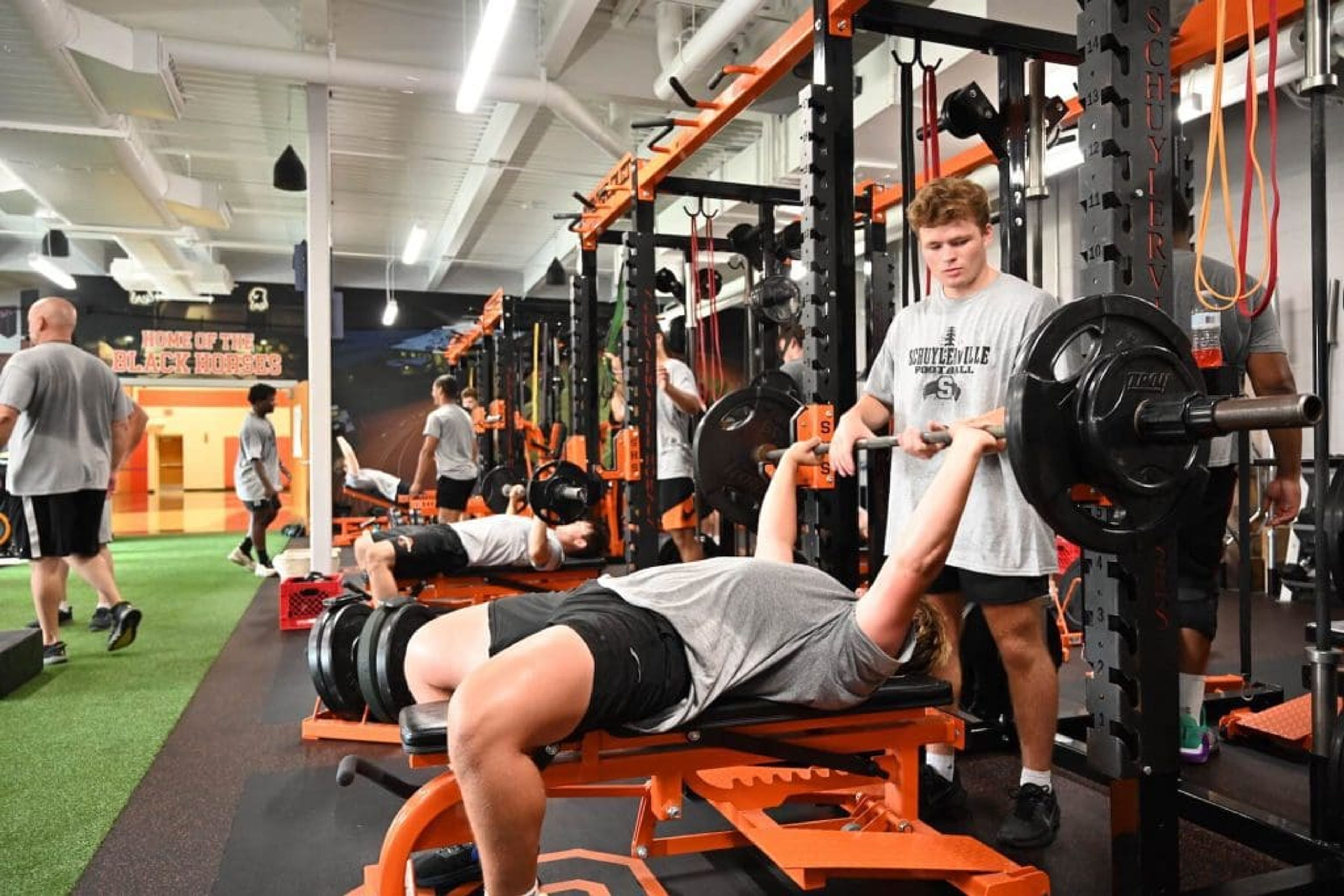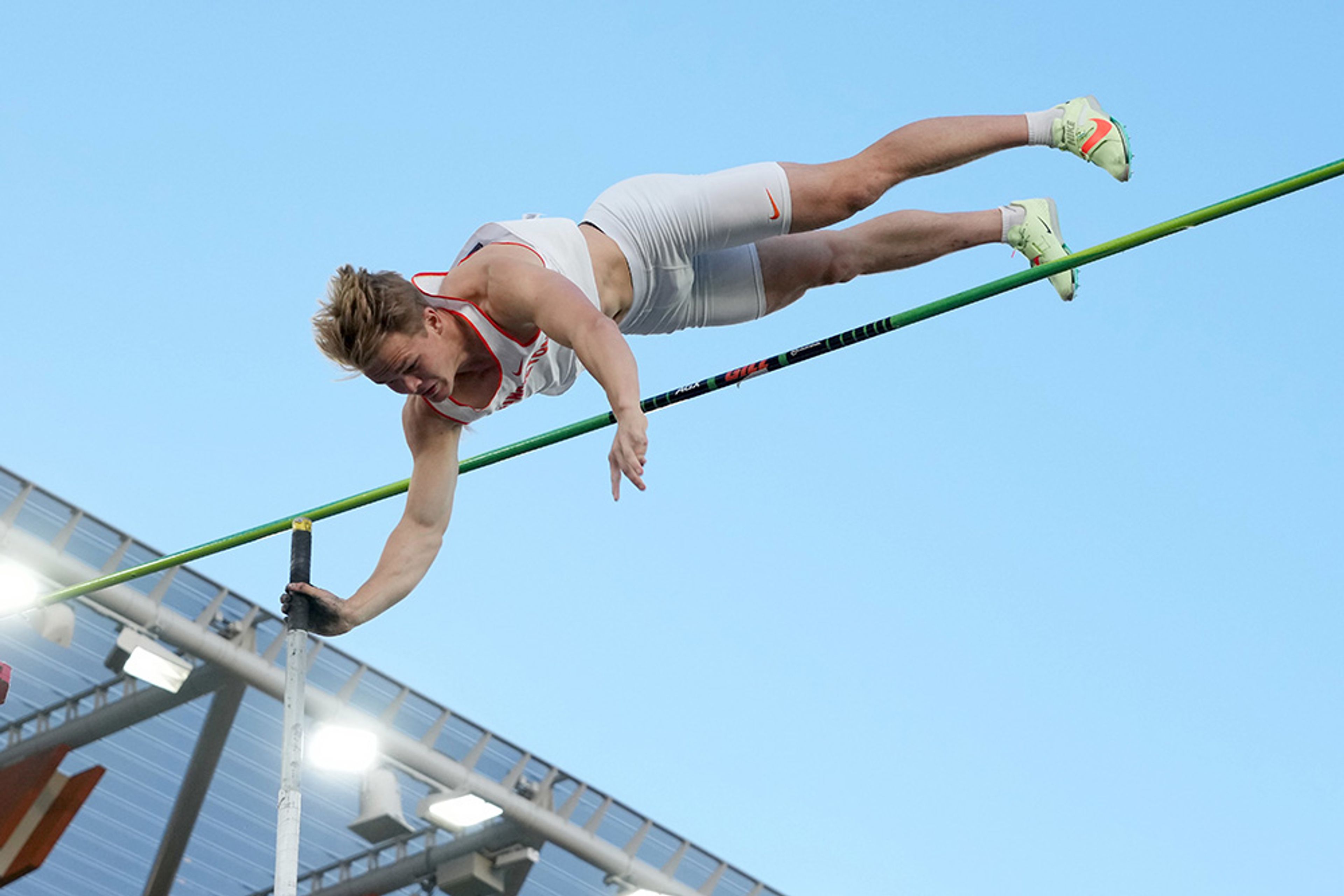High School Track and Field Pre-Season Workout
Unlock peak performance with this comprehensive high school track and field pre-season workout plan. Build endurance, strength, and speed in the crucial first 40% of the season, ensuring athletes are ready to excel.
For any successful track and field season, the foundation is laid long before the first race, jump, or throw. The key to unlocking potential lies in the first 30-40% of the season—this is where athletes build the endurance, strength, and speed they’ll need to excel when competition heats up.
Whether you're coaching future NCAA All-Americans or leading a high school team with varied experience levels, the strategy is the same: Create a well-planned, comprehensive pre-season program to set your athletes up for success. This workout guide taps into the collective wisdom of elite coaches, ensuring your athletes peak at the right time.
Why the First 40% of the Season Matters
The initial phase of the season, often referred to as the General Preparatory Phase, is crucial. It’s where athletes focus on building their physical base—strength, endurance, mobility, and flexibility. This base allows them to endure the rigors of the competitive season and handle the explosive training that will follow. Skipping this phase or cutting corners could lead to early burnout or injury.
Circuit training plays a vital role here. It’s perfect for high school teams with varying ability levels and large rosters because it allows athletes to work at their own pace. The emphasis is on time, not repetitions, making the workout accessible and scalable for every athlete.
Pre-Season Workout Plan: Laying the Foundation
This comprehensive pre-season workout is designed to improve strength, endurance, and technical skills. We’ll break it down into four key components: lower body, core, upper body, and track work. Each session can be customized based on the needs and abilities of your athletes, and the circuits allow for maximum efficiency.
Phase 1: Building Strength and Endurance (Weeks 1-4)
Focus: General conditioning, endurance, and full-body strength.
Workout Breakdown:
1. Circuit Training (4 days per week)
Workout Duration: 60 minutes
Lower Body Circuit (Timed: 30 seconds on, 30 seconds off):
Straddles (in-place jumps)
Single-leg butt kicks
Double-leg tuck jumps
Russian kicks
Speed skaters
Prisoner squats
Lateral squat jumps
Core Circuit (Timed: 30 seconds on, 30 seconds off):
Crunches
V-sits
Flutter kicks
Leg toss
Side-ups
Back hypers with a twist
Toe touches
Upper Body Circuit (Timed: 30 seconds on, 30 seconds off):
Pushups
Decline pushups
Handstand pushups (advanced athletes)
Medicine ball chest pass
Overhand partner toss
Back-to-back exchanges (medicine ball)
2. General Strength Circuit (2 days per week)
Workout Duration: 45 minutes
Pushups
V-sits
Decline pushups
Toe touches
Double leg eagles
Squats
Handclap pushups
Lunge throw (with medicine ball)
Superman holds
Phase 2: Explosive Power and Speed (Weeks 5-8)
Focus: Speed development, explosiveness, and refining technique.
Workout Breakdown:
1. Bounding and Plyometrics (3 days per week)
Workout Duration: 60 minutes
In-Place Jumps:
Tuck jumps (3x15)
Speed skaters (3x20)
Russian kicks (3x20)
Bounding and Plyometrics Circuit:
Single-leg hops (3x10 per leg)
Double-leg hops for distance (3x10)
Progressive box jumps (4 sets)
Depth jumps (4x10)
Hurdle hops consecutive (3x12)
2. Speed and Agility Work (3 days per week)
Workout Duration: 60 minutes
Track Drills:
A-skips (3x30 meters)
B-skips (3x30 meters)
High knee runs (3x40 meters)
Backward high knees (3x40 meters)
Tempo runs (5x200 meters at 70% effort)
Hill and Stair Runs:
Hill sprints (6x20 meters)
Stair sprints (4x50 steps)
3. Weight Room Work (2 days per week)
Workout Duration: 75 minutes
Squat (4 sets of 8)
Cleans (4 sets of 6)
Bench press (4 sets of 8)
Step-ups (4 sets of 10 per leg)
Lunges (4 sets of 10 per leg)
Pullover (3 sets of 12)
Leg curls (4 sets of 10)
Leg extensions (4 sets of 10)
Phase 3: Transition to Competition (Weeks 9-10)
Focus: Tapering volume, maintaining speed, and fine-tuning technical skills.
1. Absolute Speed Work (2 days per week)
Workout Duration: 45 minutes
4x40-meter sprints at max effort (5 minutes rest between sets)
4x100-meter build-up sprints (accelerate over 100 meters, rest 3 minutes)
Stick drill (explosive acceleration drills with sprint sticks)
2. Event-Specific Work (2 days per week)
Workout Duration: 60 minutes
Sprint mechanics drills (3x30 meters of A-skips, B-skips, straight-leg bounds)
Jumping drills for field athletes (bounding, plyometrics)
Throws-specific conditioning (shot put, discus, or javelin throws)
Why This Plan Works
By focusing on general conditioning in the early weeks, athletes build the strength, stability, and endurance they need to handle high-intensity training later in the season. Circuit training is used to maximize efficiency, giving athletes a strong foundation while minimizing injury risk. As the season progresses, workouts shift toward explosiveness and speed, preparing athletes to peak when it matters most.
This program also recognizes the challenge high school coaches face with large rosters and varying levels of ability. By timing the circuits rather than focusing on reps, athletes can work at their own pace without sacrificing the quality of their workout.
Strengthening the Base for Long-Term Success
A strong season starts with a strong base. The first 30-40% of the season is where champions are made. Implementing this ultimate pre-season workout plan will give your athletes the foundation they need to compete at their best, ensuring they have the strength, speed, and stamina to finish strong.
As the saying goes, "The pyramid can only be as high as the strength and stability of the base permit."









